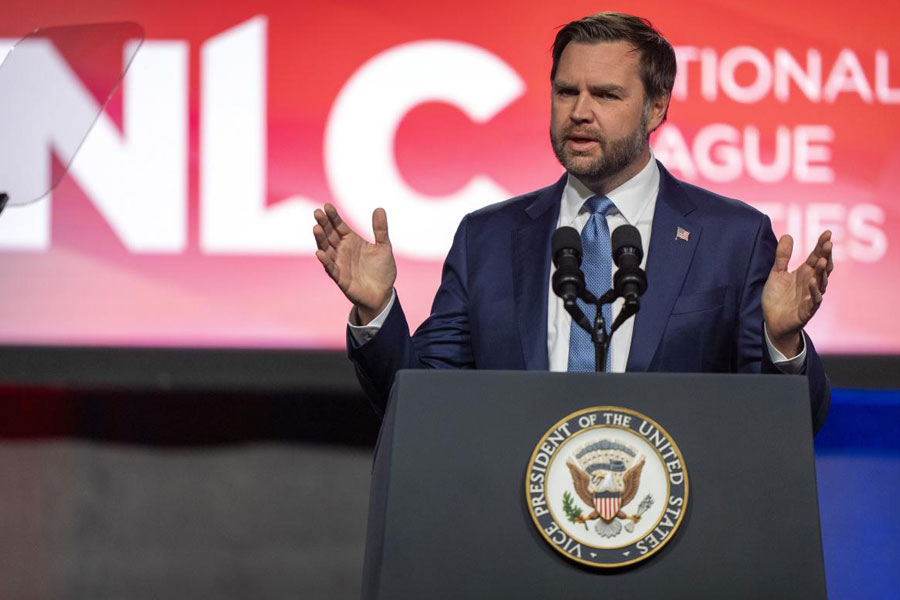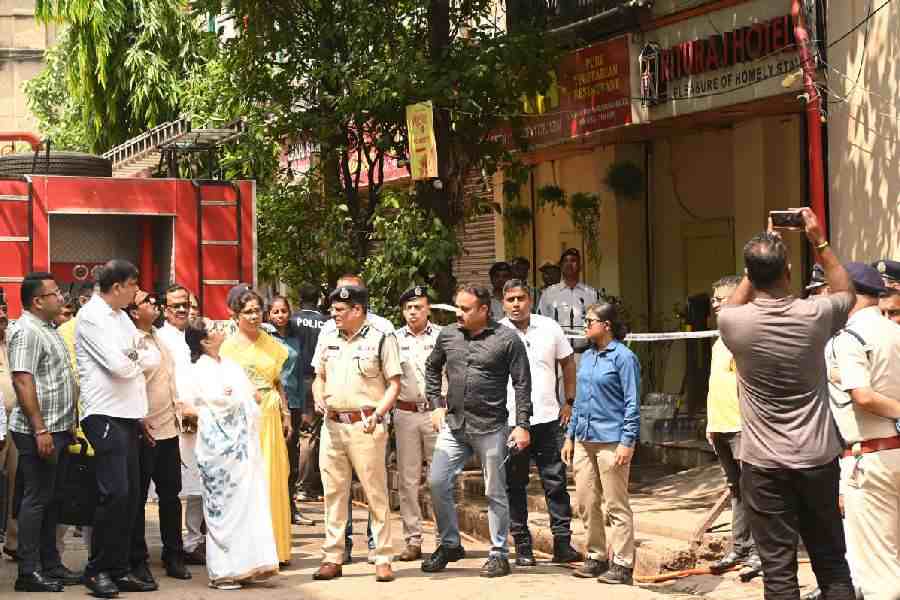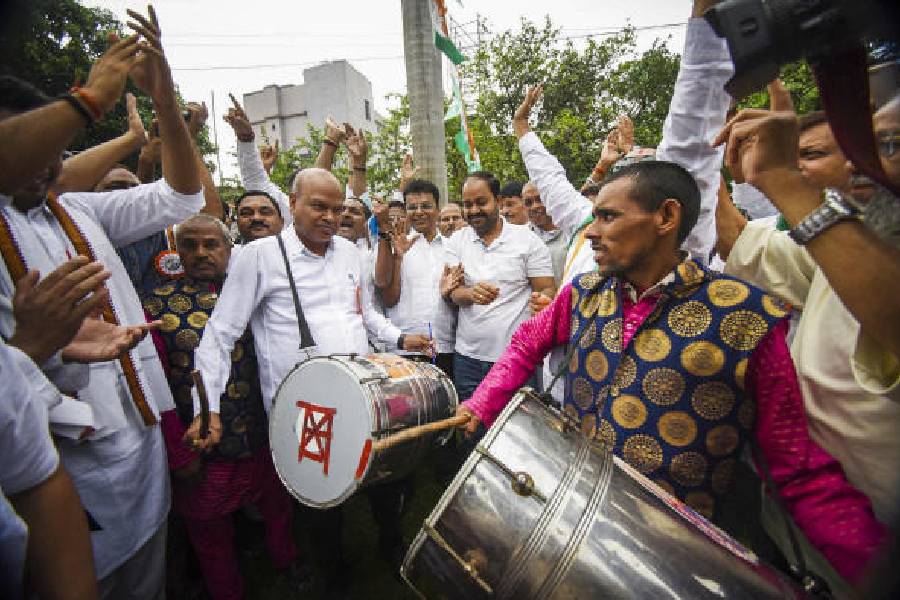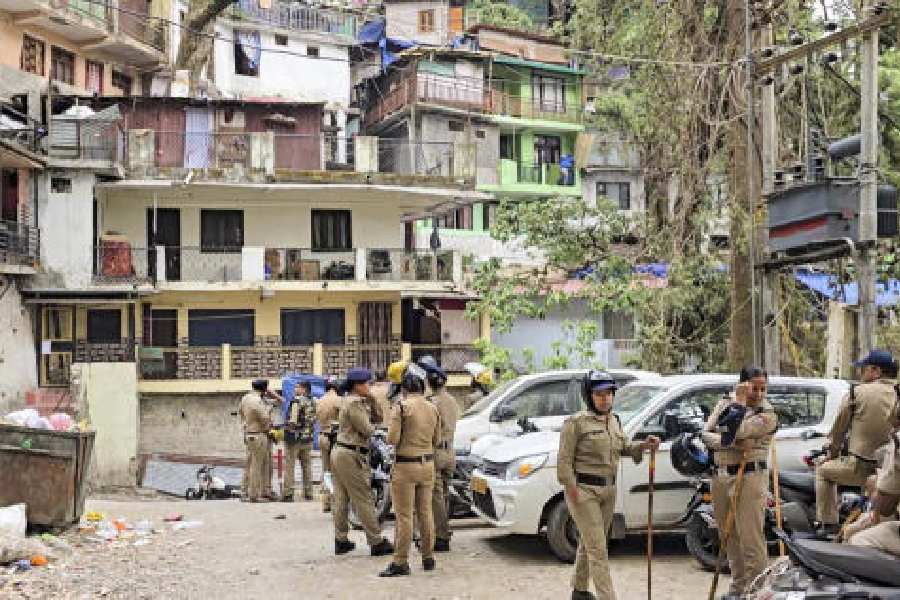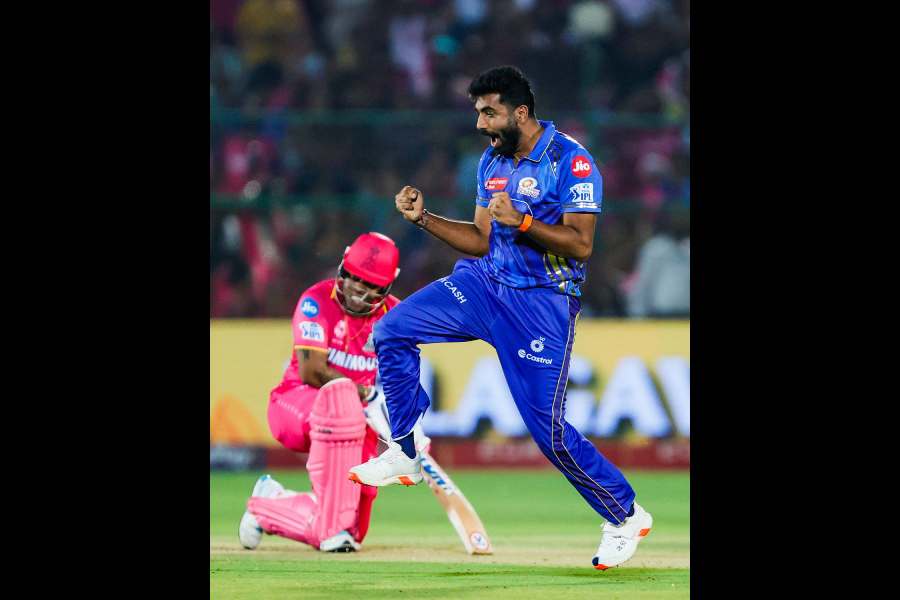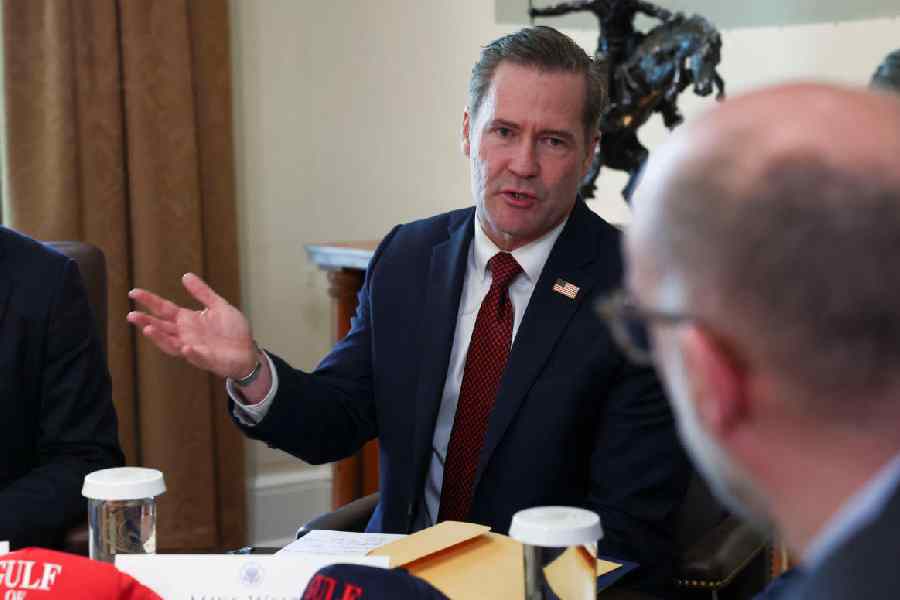THE STORY SO FAR
 |
| A model dressed by Rajesh Pratap Singh at WIFW |
The Indian fashion fraternity has its roots sometime in the late 1980s but it was only in 1998 that a council was formed as an “industry body with the objective of promoting the Indian fashion industry”. Ten years might not seem too long but the happenings in and around Fashion Design Council of India (FDCI) have been hot and hectic.
It was a honeymoon back then, the first Fashion Week, then called Lakme India Fashion Week. But then came the divorce in December 2005. The official reasons? Both FDCI and Lakme have always maintained that the split was purely commercial. FDCI wanted to go from a one-event format per annum to two-event. The budget doubled. And Lakme took a “business decision” to opt out. Lakme and IMG have been hosting Lakme Fashion Week in Mumbai since March 2006. FDCI and Wills Lifestyle got together to host Wills Lifestyle India Fashion Week in the capital. And the two fashion weeks learnt to co-exist happily. But just before ‘ever after’ happened, something went kaput in Delhi.
The latest trouble started brewing about six months ago says Rathi Vinay Jha, outgoing director general of FDCI. The FDCI board changed after three terms (or nine years) and the new board had “lots of questions”. With 99 per cent of the board members being new, they did have a lot of queries on the administration systems, on accounts… “There was some amount of problem with managing people. That led to a request of a Special General Meeting (SGM). They wanted to amend our MOA and rules. They also wanted to dissolve our governing body. The Council’s rules do not provide for dissolution. I took a stand to do things properly, not rushing through things in three weeks. In the meantime, two members went to court against our executive director Sumeet Nair. So there were two issues — one related to dissolution of the board, the other was the civil case. This fragmented the designer fraternity. The request for SGM was withdrawn and suddenly Sumeet Nair resigned on June 10.”
On July 18, a third Fashion Week was announced. The event was to be held at the Emporio, Delhi’s luxury destination, by Prodigy Fashion and Sumeet was “hired in the capacity of a consultant, to guide the company at strategic and operational levels starting with the Fashion Week at the Emporio.”
Rathi Vinay Jha: “It is a free country. It is for people to decide how they want to spend their time. I am not a politician who will say I hope everyone will come here. I have to be realistic.”
Sunil Sethi: “If he (Sumeet Nair) were a visionary, he would launch a men’s fashion week or a resort or cruise collection event, something that adds value. What is the newness in this third fashion week? It is only going to fragment the industry and not bring any commercial advantage.”
Ritu Kumar: “Foreign labels are enough of a threat. We as an industry should stand together. As a country, we should stop getting divided and ruled. We need to look at the larger picture.”
Who is the third front?
 |
| A ramp moment from Anamika Khanna’sfinale showing at WIFW earlier this year.Thedesigner has decided to be part of theFashion Week at Emporio |
The challenger is Sumeet Nair. The name might not ring a bell but he is not new to the fashion fraternity. Originally an export guy, his client list included the likes of Donna Karan and Nicole Farhi. Highlights of his career:
Sumeet was one of the founding members of the FDCI in 1998.
He was appointed as a member of the board of governors at FDCI and subsequently as the executive director.
He was again appointed as the ED in July 2007.
He resigned on June 10, 2008 following a series of allegations by two FDCI board members.
Sumeet is now a “fashion consultant to Prodigy Fashion, an event management company that will specialise in fashion and lifestyle events”.
Prodigy Fashion is hosting the third fashion week in India tentatively called Fashion Week at Emporio. The dates (October 14 to 18) are clashing with the WIFW dates (October 15 to 19) at Pragati Maidan, a 45-minute drive from Emporio at Vasant Kunj
First among equals
There was too much happening in Delhi after Sumeet Nair’s sudden resignation from FDCI. For the council, it was time for damage control. For the designers, it was time to take sides. The situation was worse for Delhi designers, because they felt the maximum heat. The Mumbai and Calcutta designers still breathed easy. FDCI decided to take control while the rumour mills buzzed overtime. They appointed Sunil Sethi as the president of FDCI and also formed a management committee comprising designers JJ Valaya, Manish Arora, Rajesh Pratap Singh, Rina Dhaka, Ritu Kumar, Rohit Gandhi and Sunil Sethi. “This committee will form the support system since only two months are left for WIFW. They will look into different aspects and also give guidance to our offices in FDCI,” says Rathi Vinay Jha.
Reacting to the third Fashion Week, the FDCI front is clear — the same show dates are not acceptable and this was their “only concern”.
The dates are decided and the fashion frat is divided. But who are the winners and who are the losers?
Designers: Delhi designers are suffering most, not so much business-wise but since friendships and loyalties are being tested.
Tarun Tahiliani had said last month that he was “not happy with the way Sumeet Nair was handled, and he and Rohit Bal will stick to Sumeet”. Well, he kept his word. Even Anamika Khanna has joined Sumeet’s Fashion Week. Ditto for Gaurav Gupta. For the record, there have been no resignations from FDCI. Jha also says that designers who show in the third Fashion Week can show in WIFW, “subject to space”. First preference will be given to those who are not showing elsewhere.
The Lakme camp is sitting pretty, their designers happy to be on a moral high ground. Sabyasachi Mukherjee says: “India’s production and professionalism is already viewed as dubious. This mess will tarnish the image further. Brand India needs to go ahead with integrity and consistency — not like this.”
Models and choreographers: More ramp shows means more work for models. And considering the growing model population in the country, how can three Fashion Weeks be anything but good news? “The only good thing about three Fashion Weeks is that everyone will get work, everyone will make money, everyone will be happy,” says Calcutta girl and model Shonal Rawat.
Though most senior models are freelancers and are not tied to any agency and are free to walk for any event or designer they like, newer models will work according to their agency tie-ups only. Senior models may be torn between two top designers, if both are showing at the same time.
As far as the choreographers go, talent will run short. “It will be chaotic. Fittings take time and the dates are too close for comfort,” says leading choreographer Anu Ahuja.
Buyers: “The buyers’ job is to buy. Buyers are not biased. If there are three or 30 Fashion Weeks, it is good for the industry, good for us. Yes, it could be tough when a buyer wants to catch two fashion shows on the same day. But thank god at least they are in the same city!” says a leading domestic buyer not wishing to be named.
Domestic buyers can also order without catching the ramp shows. But what about international buyers? Well, it is said that most business happens at the stalls at every fashion week anyway, which may turn out to be the saving grace.
Audience: No one really cares. Only the socialites will suffer. How can they be everywhere at the same time? And so much more stress about clothes, jewellery…
Media: Clearly, the biggest winner. More stories, more interviews, more gossip, more malfunctions...
Miscellaneous: Advertisers will flourish. Prime-time TV will get spicy again after IPL. The hospitality industry will make more money.
Final word: We aren’t taking sides. let the best week win!
SUNIL SETHI, FDCI PRESIDENT
 |
You’re one rare smiling face around during Fashion Week…
Oh thank you! My 150-member team at work won’t agree with you because I am a hard taskmaster! In fashion, so many personalities come across as inaccessible that maybe I come across as a happy contrast! I have a passion for design, fashion and art and till today I am as excited about fashion week, as if it is in the first year.
Did you expect to be FDCI president?
No! It was a surprise. Being co-opted as a member of the board was good enough for me.... I soon realised that there were many other capable people. They didn’t want a designer member and since I am an industry guy, I fitted the bill. It does please me that I am involved with the FDCI. FDCI gave me my break in fashion — it is payback time!
What do you bring to the table as the new president of FDCI?
People might think that being the president or on the board of FDCI is a thankless job but I don’t agree. If you are able to make a difference it is all worth it. If I am able to show some fresh ideas to stalwart designers and tempt them with something or an idea that is out of the box, I will feel my job is done.
I have worked with fashion designers for the past eight years and they know what I stand for. I will not change overnight but yes, I have been more flexible dealing with them now than I have ever been! They need explaining and some handholding. This is what I bring to the table. I aim to find a solution rather than close the door on he or she who is not a star of the day.
Where is India on the global fashion map?
We have abundance of talent. We just have to go to the world and show it. People are gaining courage these days. Designers are setting up shop-in-shops and selling under their brand names. We may not be as popular as designers from the West, but we can’t wait forever and ever for people to take notice. It has to be now. So many other countries are less talented but because of effective marketing and projecting, they have gone ahead of us. We are still debating whether we are good enough or not. But we don’t know whether we will make it unless we are out there. As a buyer, I know we can make it. But as the president of FDCI, I don’t want to take the decision because markets can be restricted. But we must know that:
- We have a designer for each market.
- We have to project each category properly.
- We should use the embassies well but only for initial contact.
- We don’t need bureaucracy in fashion.
- We must get involved with fashion councils across the world to make inroads into their markets.
What are the possible roles of a council in the business of fashion?
A lot can be achieved through a council. For starters, a permanent booth can be set up that should talk about the industry rather than individual people. It should have visuals to explain the industry, products and all the information pertaining to various people. The staff should even be trained in taking orders, it doesn’t matter which label. It should represent the body so that the world over people can be made aware. Once we start, other countries should respond. New York, Milan or whichever council, even before inviting them here, we should invite ourselves there!
What do you feel about the Calcutta contingent?
We are all aware of the abundance that the east brings but it surprises me that unlike Delhi and Mumbai that spring new names each season, Calcutta is lagging slightly behind. Maybe the city is too comfortable with its casual comfy style of dressing but why do people forget that it was that look itself that Sabyasachi took to the world? More and more people need to follow his example. He is a name to reckon with everywhere and is one of our talented designers. Why do people forget that Ritu Kumar began there and it is also home to Anamika Khanna? So there is talent, it only has to be encouraged. Calcutta designers have made us proud in New York and Paris.
SUMEET NAIR, CONSULTANT, FASHION WEEK AT EMPORIO
 |
Honestly, do you think there is place for a third fashion week?
Absolutely! A third fashion week is basically an additional platform for designers, buyers and the industry in general. There are no restrictions to the number of fashion weeks in any country. South Africa also has three!
How will Fashion Week at Emporio be different from what is already out there?
Firstly, we are a Fashion Week that is about the top-end of the market. The most creative designers in the country will showcase here. Secondly, we will focus on accessory designers.
But why are your dates clashing with Wills Lifestyle India Fashion Week?
We have purposely done it to aid cross-pollination. Both FDCI and we will fly down media and buyers who can attend both. This way the buyers and the designers both will gain. I have nothing against FDCI and both events can take place side-by-side.
In fashion weeks across the world, there are on-site and off-site shows. There are on-schedule and off-schedule shows. They always clash. The entire city is buzzing. This is the first step towards making it all happen. The new Fashion Week will enrich the week, making Delhi a fashion destination for all that week. I also got feedback from the buyers. They would not come for eight or nine days at a stretch, meaning they would have to choose between the fashion weeks and that means the designers would lose. So, as I said, cross-pollination is the idea behind the dates — not ego.
Did you ever think of joining hands with Lakme after resigning from FDCI?
Never. Once I left FDCI, I decided to do another fashion week that was more focused and top-end, not with 85 or 90 participants. Quality and creativity will count.
What about designers who want to show at WIFW? Can they show with you too?
It is a free world. If a designer wants to show in all three, he can! If they want to promote their identity, then what can stop them from showing on each individual platform?
And what about the Luxury Week that is slated for next month?
It’s not a Luxury Week. Yes, something is happening but I can’t talk about it yet.
ANIL CHOPRA, LAKME ADVISER, ON THE GREAT DIVIDE IN DELHI
 |
From a Lakme Fashion Week perspective, all I can tell you is what we have watched and read in the media. I would like to take you back three years and clarify that Lakme broke away from FDCI only on financial grounds. Percept, their then event management company was asking for a ridiculous sum of money and in business, sometimes you have to step back and ask: ‘Is it worth it?’ Our pullout was a measured business call. It was not a people issue.
On whether there is scope for a third Fashion Week, only time will tell. When we broke away and launched Lakme Fashion Week, people said there was no scope for two Fashion Weeks. In the last five Fashion Weeks we have clearly demonstrated that it is possible, provided they are well-run and are hosted by well-reputed organisations, not individuals. Lakme and IMG and FDCI are reputed bodies.
Maybe this third one will work, maybe it won’t. But I repeat, they have to be run by organisations and not individuals. Even in cricket, there are Tests, ODIs and IPL but there is a credible governing body, BCCI.
 |
| Manish Malhotra’s line-up at the most recent Lakme Fashion Week in Mumbai |
Fashion Weeks need enough people for marketing and infrastructure. They need funding. It takes about five crore to host such an event. So there’s a lot at stake in this third Fashion Week. Who is sponsoring it?
We at Lakme are not getting distracted by what’s happening in Delhi. What they do is their business. We are focusing on what is the right thing to do for fashion. We have already announced men’s fashion day and a group accessory show in Lakme Fashion Week. Designers in LFW are family, let the Delhi designers choose their sides.
Should Calcutta have its own Fashion Week? Tell t2@abpmail.com


